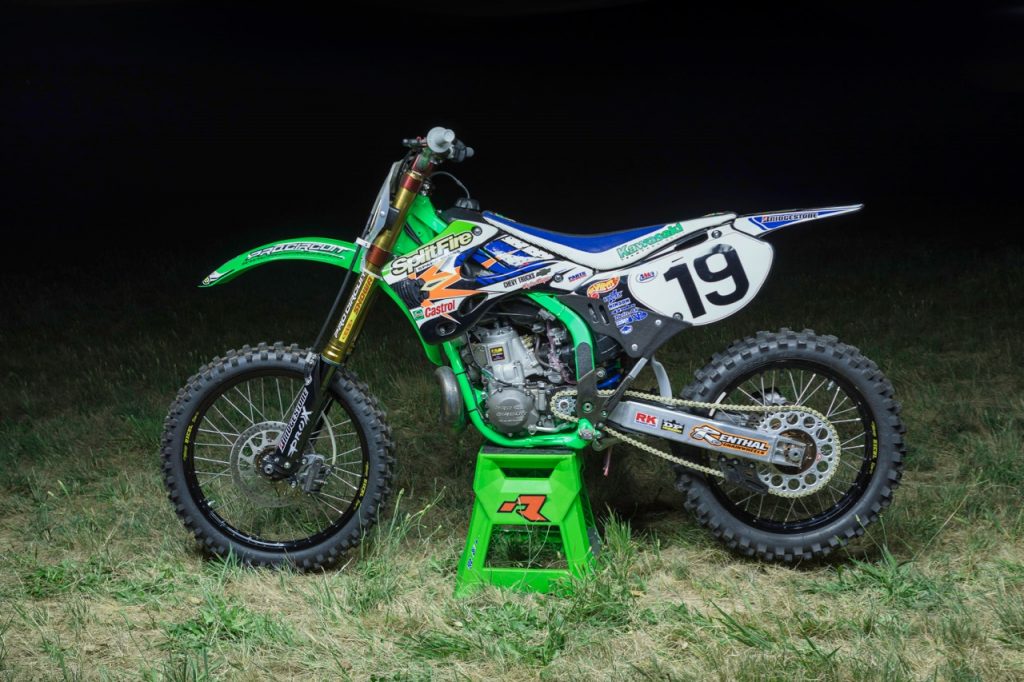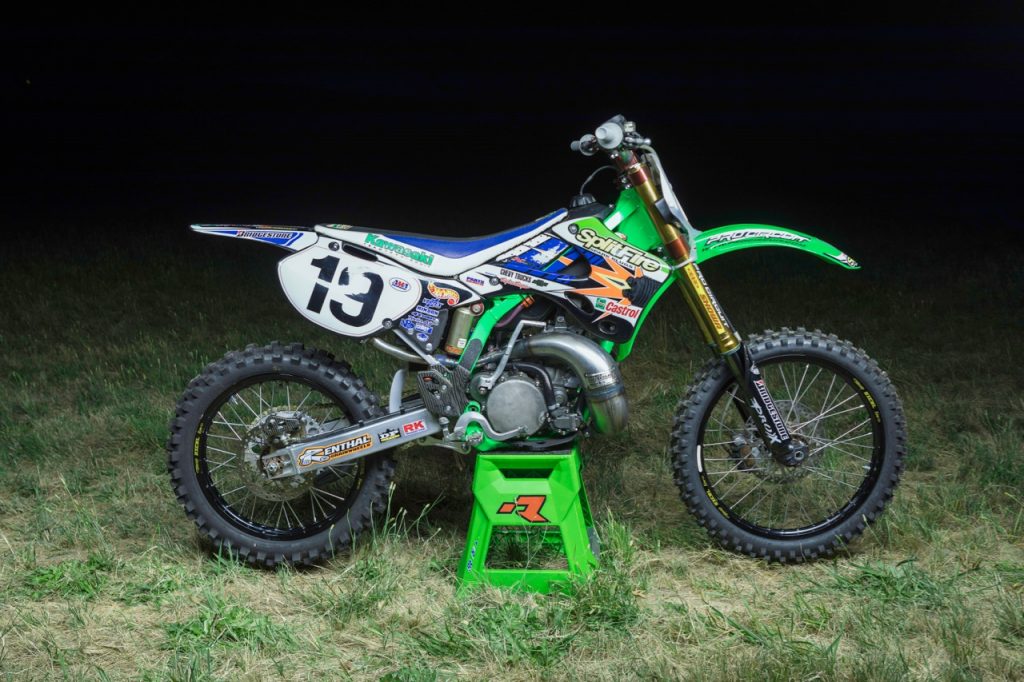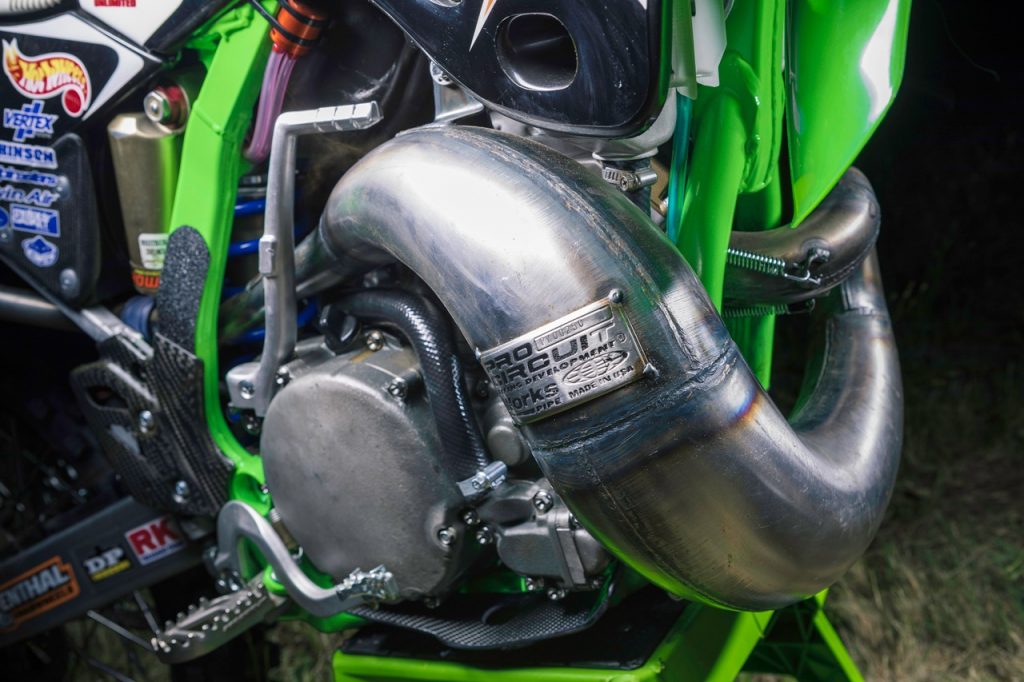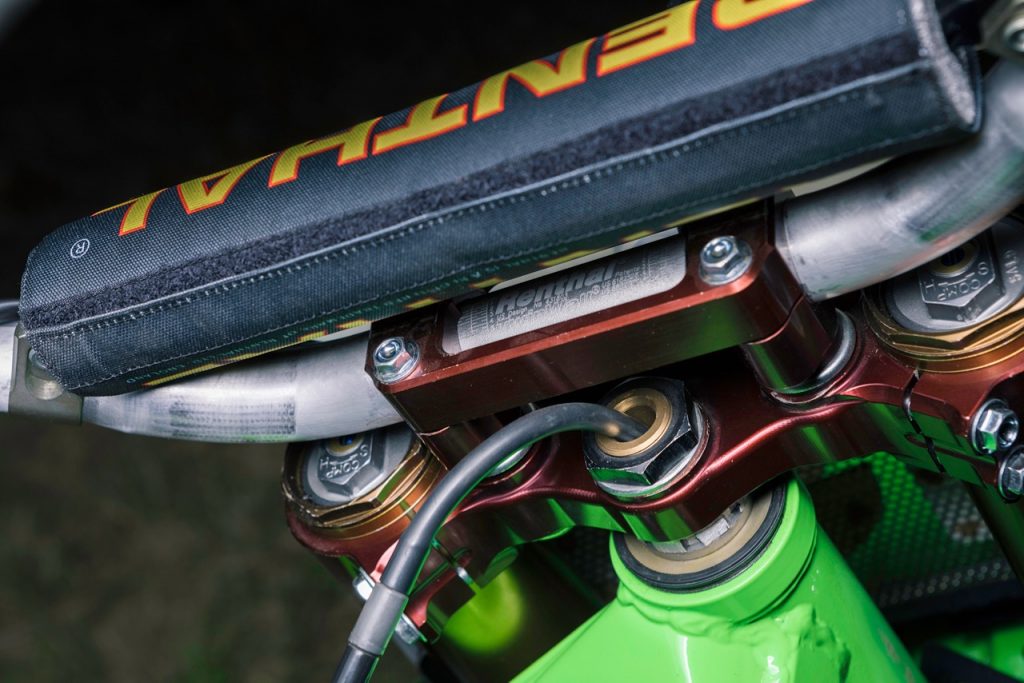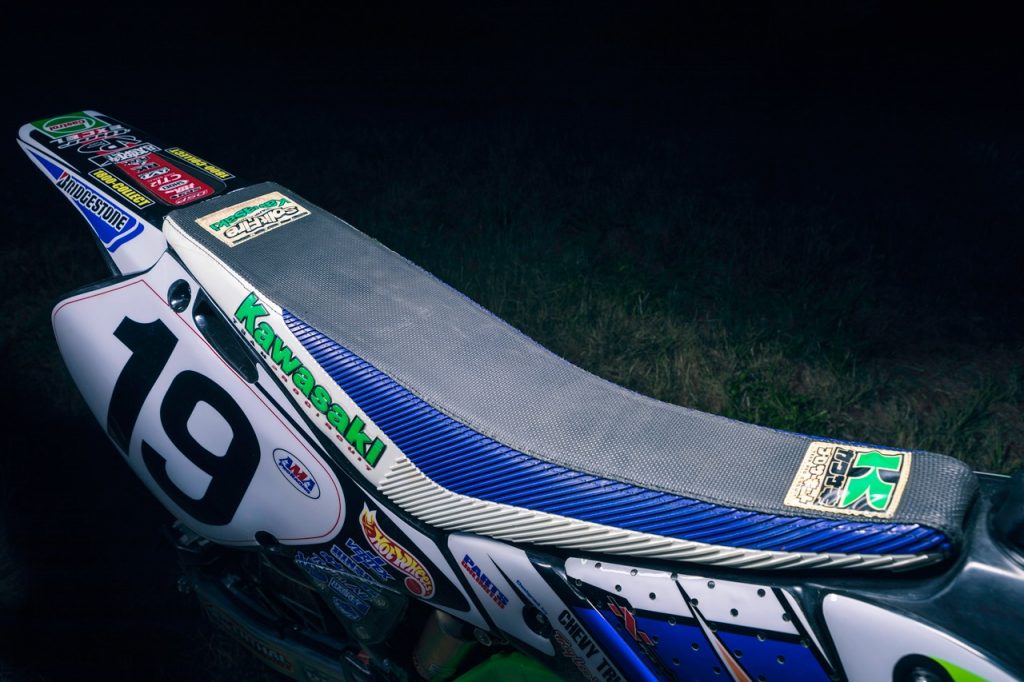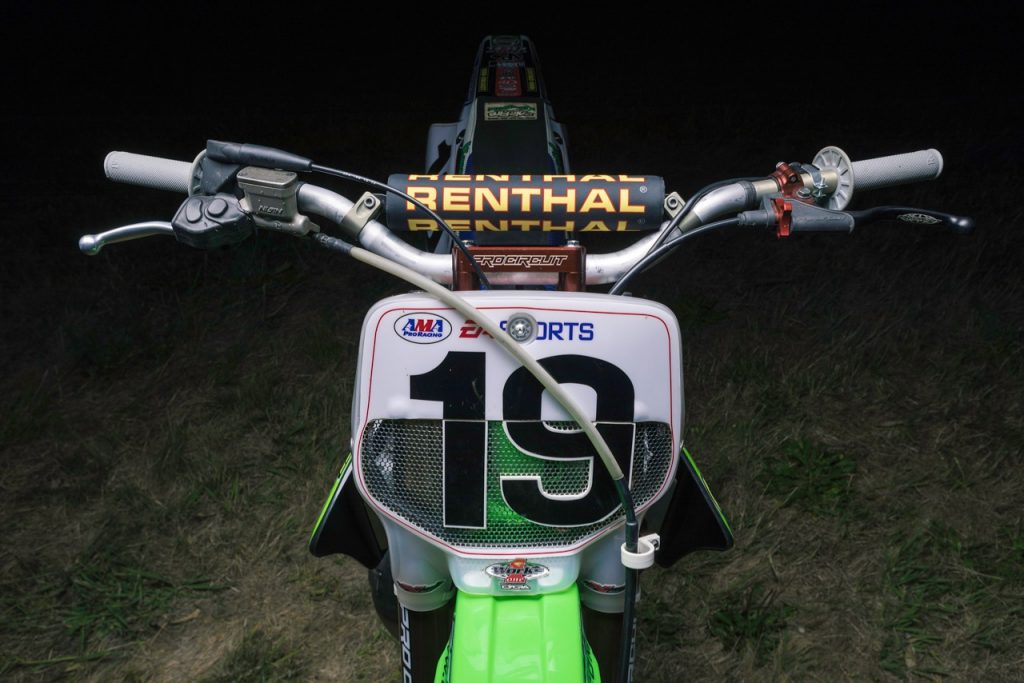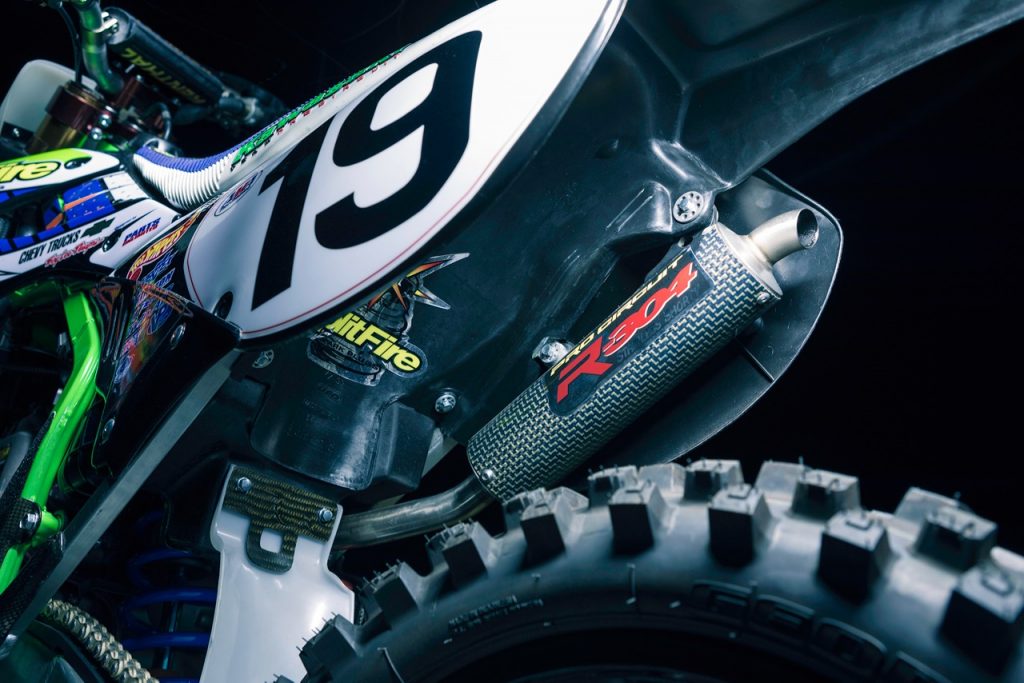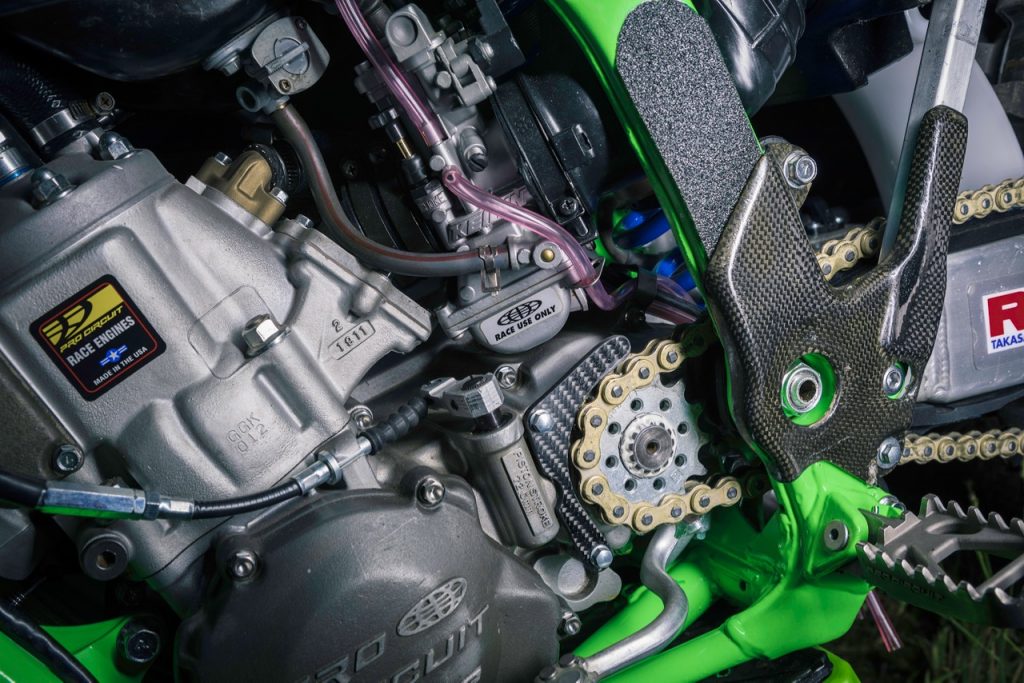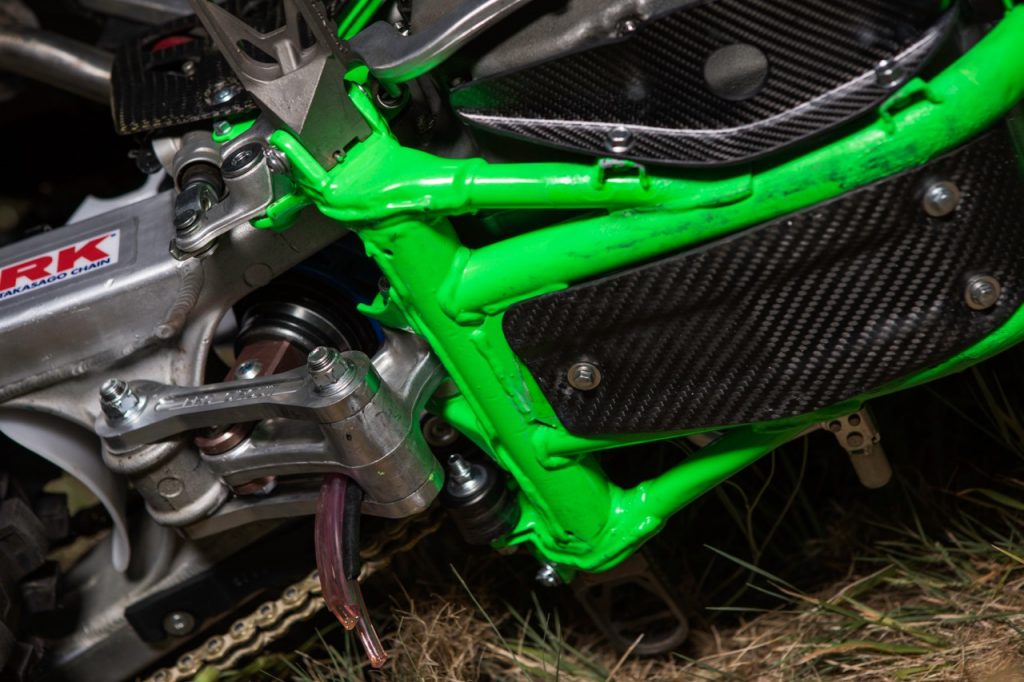If Da Vinci decided to build a dirtbike, it would probably look a lot like Matt’s 2000 KX250 Splitfire replica.
Read Part 1 of the build story HERE.
Words: Dylan Ruddy
Pix: Ben Gali
A work of art, by definition, is an artistic creation made to express the author’s imaginative or technical skill and is intended to be appreciated for its beauty or emotional power. Take Leonardo da Vinci’s masterpiece, the Mona Lisa for example.
Every day, thousands queue up at the Louvre in Paris to get a brief glimpse of the 77 x 53cm painting and admire its apparent beauty. You don’t get that many people lining up to see your ratbag brother’s lame graffiti.
Just about anything can be considered art these days; but the thing that separates people like da Vinci from the old mate who decides to get his makeshift tattoo gun out after a few too many beers, is attention to detail.
Bored yet? Don’t worry, we’re not the fine-art types either, but hear us out. Da Vinci was a stickler for detail. Look at any of his paintings, sculptures or contraptions and you’ll see what I mean.
And if he decided to build a dirtbike, it would probably look a lot like Matt’s 2000 KX250 Splitfire replica. That’s because Matt is also one for detail, and his bike is truly a work of art. Coincidentally, or perhaps not, he also is a painter.
Comparing Matt from Lilydale with a 15th century Renaissance man from Firenze is probably a bit of a stretch but, for us dirt surfers, looking at a bike like this is the equivalent to going to see old Mona, without the airfare or the queue.
COMPONENTS
While building bikes is a hobby for Matt, he takes the task very seriously. Where most people will chuck a bling kit and some graphics on and be done, Matt agonizes over every component, right down to the nuts and bolts.
The result is a bike that is so impressively unique that he is reluctant to ride it. Its uniqueness comes from the fact that it is as close to a period-correct factory bike as you’re ever going to get without having the real thing.
Many of the parts are not available to the public but Matt has obtained them and pieced them together to create a product that many privateer teams would be jealous of.
Now before I go on, it’s important you understand the difference between a production bike and a factory bike 20 years ago. We all know that factory bikes are special, but even a devout fan wouldn’t know how vastly different they actually were to the production versions back then.
“A production bike is built with everyone in mind, whereas a factory bike is built specifically for one rider,” explains Matt. “Every little edge that they can get counts.”
So essentially, a factory bike is hand built with custom-made, unobtanium parts that suit a particular rider. To put a price on a factory bike is near impossible because almost every part is hand made by the manufacturer’s R&D department.
Today’s factory bikes are a little less exotic than the bikes of 10-20 years ago. That is because a lot of the customisation is now in the electronics and EFI mapping. Technology, hey?
Matt’s bike started life as a stock 2000 KX250 and his original mission (ADB #450) was to turn it into a Pro Circuit Splitfire replica. He began gathering all the parts to do that but, along the way, he found he could get unique parts, including factory Kawasaki Heavy Industries components. The goalposts moved and he started adding KHI parts to the bike.
“It’s now kind of halfway between a Pro Circuit bike and a factory Kawasaki bike, with a Splitfire sticker kit,” says Matt. “I’ll probably now start collecting all the parts to make it a full-factory Chevy Trucks Kawasaki.”
Like a mad scientist, perhaps even more than the factory R&D wizards, Matt is always trying to figure out how he can make the bike better. What started out as one thing, now sits as another thing, and will probably morph into something else altogether.
At first glance, Matt’s bike might look like any other punter’s ‘factory’ replica. A graphics kit, bling and some Pro Circuit parts are what many people go for when ‘building’ VMX bikes. But take a closer look at Matt’s KX and you’ll see how special it really is.
MASS PRODUCED
“The more you look at it, the more you realise that it is just filled with parts that are unavailable for sale,” says Matt. “Not only are they unavailable to the public, but to find them 20 years later, still in good condition and usable, is even harder again. Things weren’t mass produced back then so, when you understand that, you realise how special it is to have all this stuff together on one bike.”
So how does a painter from Lilydale, Victoria, get his hands on factory race parts? “You have to know the right people that have access to the old race teams and can get their hands on the parts,” says Matt. “You just get to know people and work with them to get the right parts.”
Many of these factory parts have been lying around in warehouses and sheds gathering dust. “Most people don’t realise what they have,” says Matt. “The problem with factory parts is that they don’t bolt onto stock parts. You have to know you’re shit to make it bolt up. You have to research and know what parts do what, and what to do with them.”
As we’ve already explained, these parts were never available for sale, so how people came to obtain them is a bit of a mystery. But it’s not hard to put two and two together. Matt says either the parts were stolen or mechanics had leftovers and sold them on the side to make a little bit of extra money. “It’s sometimes frowned upon for people to have these parts, because the public is not supposed to have access to them.”
The list of candy on this bike is quite long and it is filled with a heap of magnesium, carbon, titanium, Pro Circuit and KHI parts.
“The KHI stuff is the real special stuff,” says Matt. “Anything KHI was made especially for the factory race bikes and they weren’t production parts available to the public.”
Some of the KHI bling includes magnesium cases, a carbon skidplate, titanium kickstarter knuckle, magnesium rear brake hanger, carbon caliper guard and 240mm disc. That is just a small selection.
On the Pro Circuit side of things, the bike has PC axle blocks, rear brake reservoir, works pipe, modified cylinder, magnesium ignition cover, team issue 260mm front disc, titanium footpegs, triple-clamps and carby canister.
The suspension is authentic Showa A-Kit as used by the factory teams back in the day and there’s an authentic N-Style seatcover that is rare and hard to find.
BOLTS AND WASHERS
As we said, detail is everything, and Matt hasn’t shied away from it. “Every part matters,” says Matt. “Because that is the idea of a factory bike. They don’t just go, ‘oh, that bolt will do.’ Every nut, bolt and washer matters.”
Matt didn’t build the bike to ride. The amount of effort put in means he would rather sit back with a beer and admire it in his shed than devalue it by thrashing it around a track. “Ninety-five per cent of people would say it’s meant to be ridden,,” he says. “But most of those people wouldn’t take the time to build something like this because of that attitude.”
When Matt started this build almost three years ago, it was largely a passion project. He was drawn to the ’90s and early-’00s era of AMA Supercross racing because that was what he grew up watching and the whole scene had a bit of a colourful, party vibe. But fast-forward to now and this particular era of bike has become highly sought after.
“When I started, people weren’t really interested,” says Matt. “But a few years later, when I was finishing it, other people were starting.” As a result, parts became more expensive and harder to find.
“It’s a little disappointing for me,” says Matt. “Because you see this stuff elsewhere and it takes away the specialty of it a little bit. So the whole point is you want to build yours better, because you want to set it apart from the rest.” While Matt does not want to ride the KX, he admits the temptation would get to him sooner or later. So, he has just begun building another one. “I want to build a bike in a similar style, but a 1998 model,” he says. “It will have a lot of trick parts, but it will be something that I will happily ride.”
That KX250 is just another addition to Matt’s fleet. He has previously built a 2000 Suzuki RM125, a 1989 Honda CR250, 2000 Yamaha YZ125 (ADB #460 January, 2018) and a 2016 Kawasaki KX450F (Factory Ride, ADB #462, March, 2018).
The Splitfire is perhaps his most impressive. To have a bike that is almost equal to what guys like Ricky Carmichael were riding sitting in your shed is an experience money can’t buy. But Matt didn’t just luck out with this one. It has taken plenty of blood, sweat and tears to build it
And best of all, the project is still evolving. As Da Vinci once said, “Art is never finished; only abandoned.”

